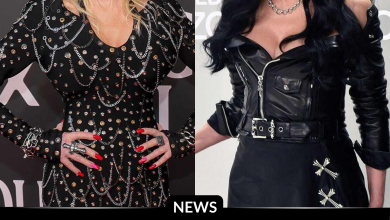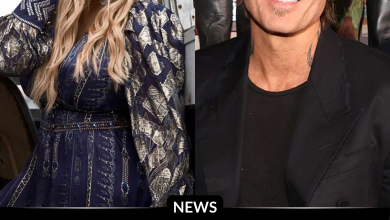How a Disappearing Jim Carrey Sequel Turned into a $5,000 Win for One Nintendo Power Reader!
OPINION: This article may contain commentary which reflects the author's opinion.
In the world of canceled projects, few stories are as strange—and as rewarding—for a single person as the tale of Nathan Ryan Runk, who won a walk-on role in The Mask II, a film that never saw the light of day. Thanks to a collaboration between Nintendo and The Mask franchise, Runk’s life took an unexpected turn in the mid-90s. What started as an exciting contest to appear in a sequel to the beloved 1994 Jim Carrey film ended up in a $5,000 payout from Nintendo, leaving fans to wonder about the bizarre intersection of Hollywood’s abandoned dreams and the gaming world’s often overlooked promotions.
A Missed Opportunity in Movie History
The Mask (1994) was a box-office hit, raking in $351.6 million worldwide on a relatively modest budget. With a zany premise and Jim Carrey’s rubber-faced antics, it captured the imagination of audiences and seemed a prime candidate for a sequel. New Line Cinema, the film’s studio, was all in, and plans for a follow-up were already underway by 1995. To capitalize on the film’s success, Nintendo teamed up with the studio for a promotion in Nintendo Power, offering readers the chance to win a walk-on role in The Mask II.
However, fate had other plans. As the promotional contest ran, the stars of the original film quickly moved on to bigger projects. Director Chuck Russell, who had helmed The Mask, was in talks with Arnold Schwarzenegger for Eraser, Cameron Diaz found herself in demand for other roles, and Jim Carrey’s star exploded with Batman Forever. As The Mask sequel slipped into development hell, the project was ultimately shelved. Yet, the contest winner, Nathan Ryan Runk, had already been selected.
A Contest that Went Nowhere—Except to $5,000
By the time Runk learned he’d won the coveted walk-on role, the production of The Mask II had already stalled. Despite this, Nintendo Power and New Line Cinema felt obligated to honor the contest’s promises. In the most unusual of turns, Runk was given a cash prize of $5,000, an amount specified in the contest’s fine print as the total estimated value of all available prizes.
Runk’s story would have ended there, with a bittersweet payout and a canceled dream. However, the story takes another interesting twist. In addition to the cash, Runk claims that Nintendo also sent him some Super Nintendo games and a Mask II crew jacket. While the jacket’s authenticity is in question—after all, it’s odd for a film never to enter production to have created “crew” items—it nonetheless added a curious layer to an already strange tale.
Runk’s experience was officially acknowledged in Nintendo Power’s last-ever issue, where an apology was printed for the canceled project. While it didn’t explicitly mention Runk by name, it was a rare gesture of corporate transparency, a gesture that would likely be as memorable to him as the $5,000 he’d received.
The Sequel That Came Too Late
The irony of this tale lies in the fact that, nearly a decade later, a sequel to The Mask was indeed produced—though it was a far cry from the original’s wacky charm. Son of the Mask (2005) featured Jamie Kennedy as the lead and was universally panned by critics and audiences alike. With a dismal 6% rating on Rotten Tomatoes, the film stands as one of the most reviled sequels in cinema history, offering little to no fanfare for those who had been anticipating the return of Carrey and Diaz.
Runk, in hindsight, might have regretted not holding out for a chance to appear in Son of the Mask, but as he admits, “I took the cash. Absolutely the right call.” After all, Son of the Mask wasn’t exactly a movie anyone would want their name attached to, even if they had won a contest to be a part of it. But with recent rumors swirling about a potential Mask follow-up starring Carrey and Diaz, Runk’s mind might change again, especially if the original duo returns for a film decades after the contest was run.
The Longest Wait for a Prize?
Had Runk held onto his prize option, it would have placed him in line for what might be a world record: the longest anyone has ever had to wait for a prize from a contest. As he reflected in his interview, “If it happens and I exercised that prize option, it would’ve meant I could’ve been in the running for a world record.” However, in the unpredictable world of Hollywood and entertainment, cashing out for a guarantee was likely the better bet.
As The Mask character himself, Stanley Ipkiss, would say: “You can’t make the scene if you don’t have the green.” In Runk’s case, he got the green—and probably made the right call in the process.
Conclusion
Nathan Ryan Runk’s story is one of the many oddities that have defined the relationship between Hollywood, the gaming industry, and fans. What started as a fun and innocent contest became a saga of hope, disappointment, and an unexpected $5,000 from Nintendo. For fans of 1990s cinema, this bizarre episode is a reminder of the unpredictability of contests, movies, and the sometimes-absurd business decisions that govern them. While the true “Mask” sequel may have eluded Runk, his story remains a testament to the strange intersection of video games, movies, and fan dreams in the pop culture landscape.



